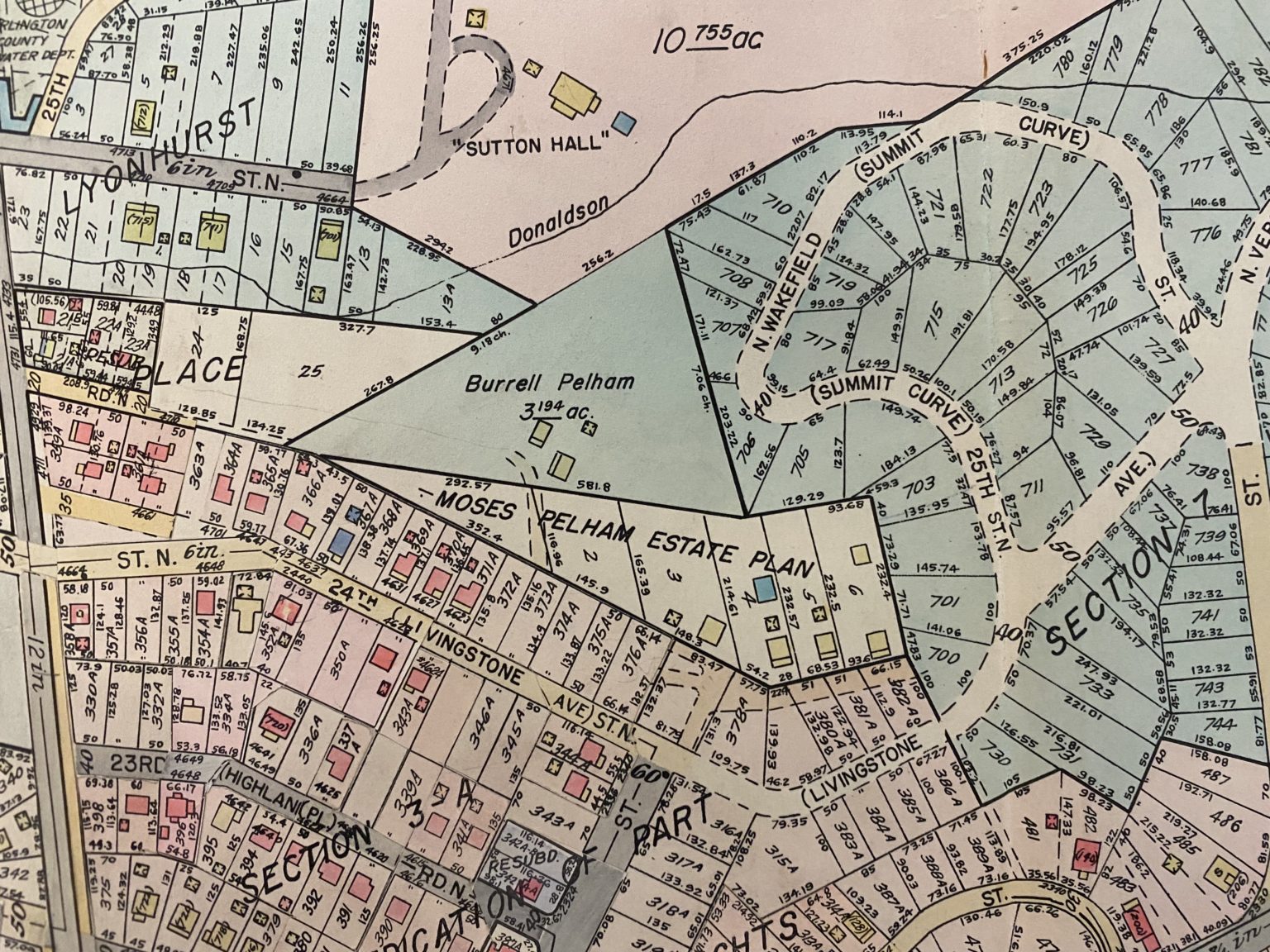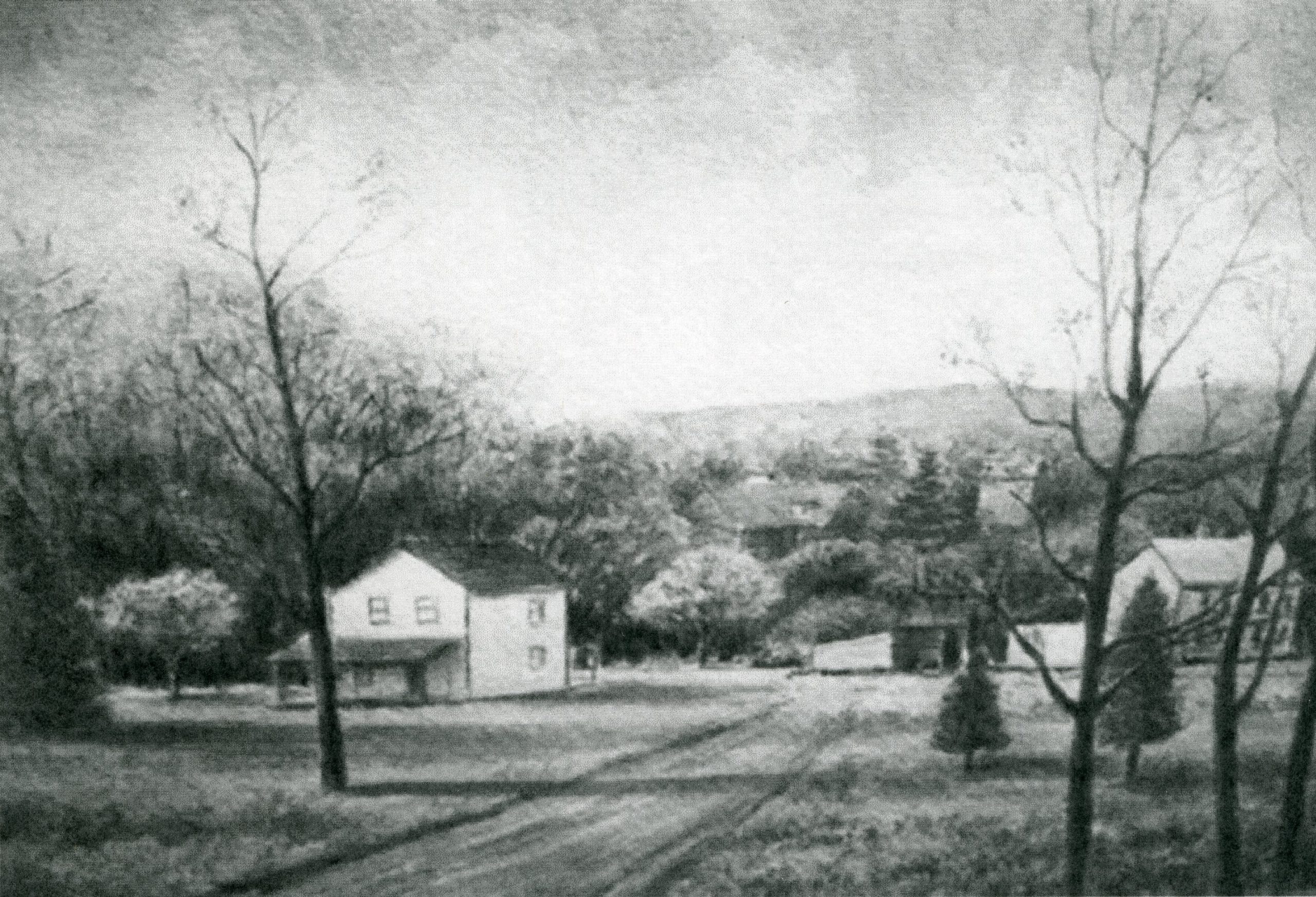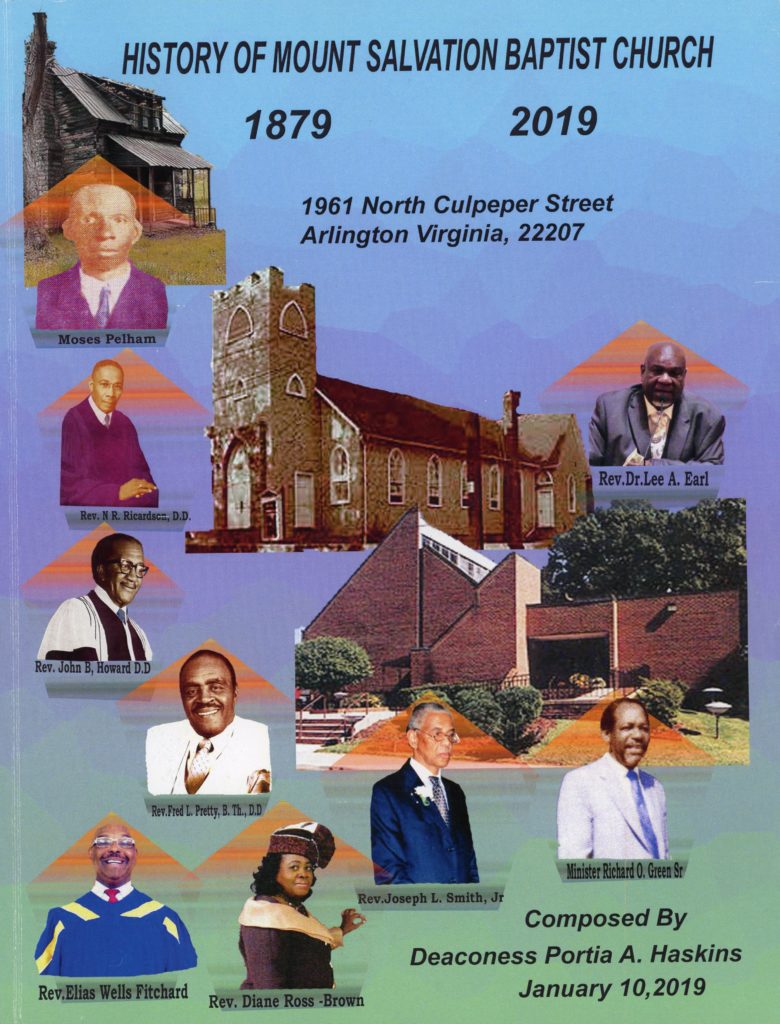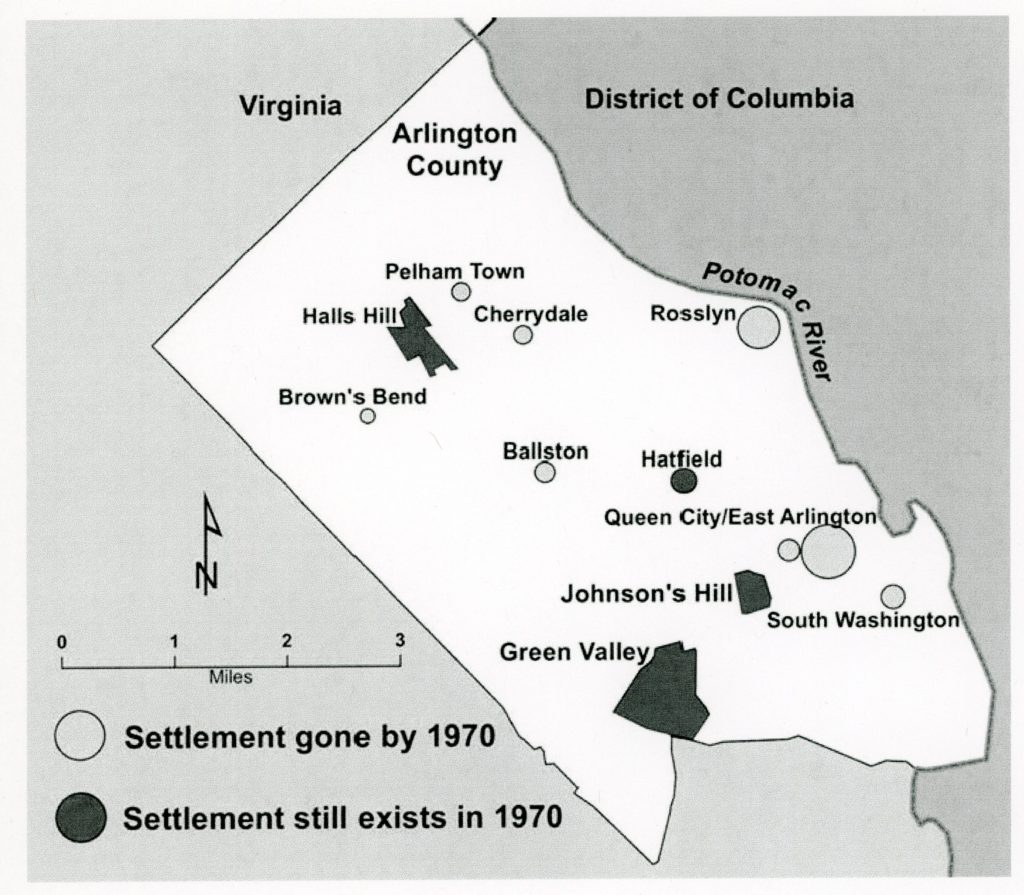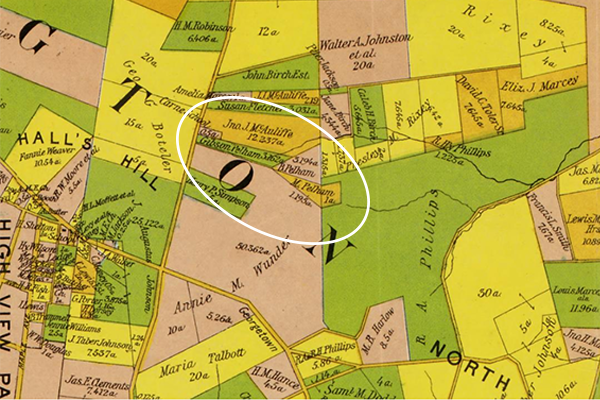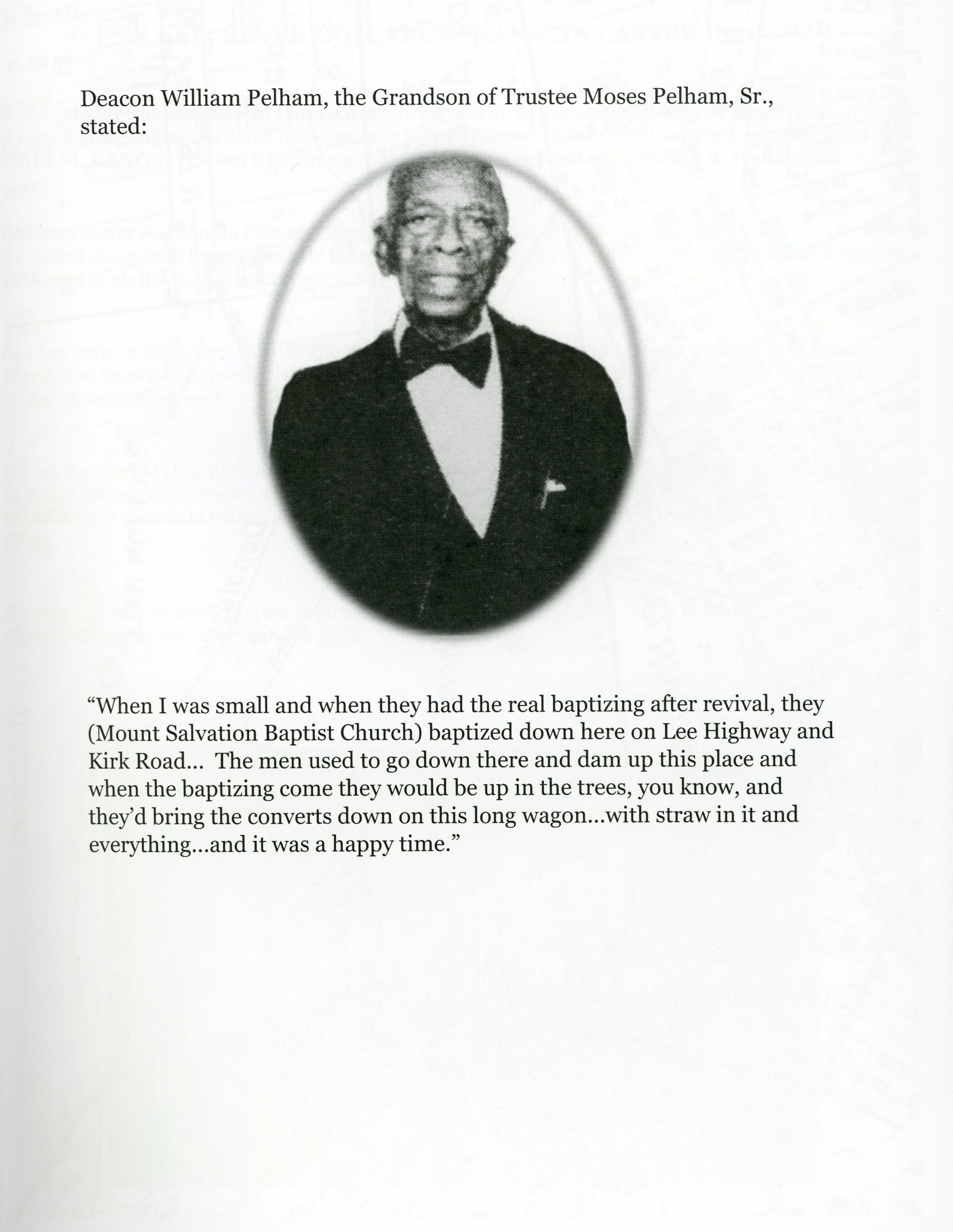A Lost Arlington Community
Arlington in the early 1900s included many small Black communities. Today the best known among them are Hall’s Hill in North Arlington, Queen City in what is now the Pentagon area, and Green Valley in South Arlington.
One of the lesser known communities was Pelham Town, a small neighborhood near the Marymount Campus, between today’s 24th Street and N. Wakefield Street.
Consisting primarily of members of the Pelham family, Pelham Town began in the 1860s, when Moses Pelham Sr. (1828-1904) and his brothers Gibson, Ed, and Burrell, moved to Arlington County from Culpeper, Virginia. Their father was freed from enslavement to the Pelham family in 1819 at the age of 21.
Pelham Sr. initially acquired one acre of land just northeast of Hall’s Hill. In 1874 he built his home and married Isabella Washington, and by 1894 he had acquired an additional acre. Isabella had eight children who lived to adulthood, and the family became an important part of the social support network for a community which sourced almost all of its services from within its boundaries during decades of segregation. In “History of Mt. Salvation Baptist Church (1879-2019),” Deaconess Portia A. Haskins wrote of how “During the late 1800s Moses Pelham Sr. was well regarded for selling some of his property to assist freed slaves in their quest for land ownership.”
Upon the death of Moses Pelham Sr. in 1904, his land was divided among his six remaining children - Moses Jr., Burrell, Edward, John, Annie Spriggs (née Pelham), and Matilda Robinson (née Pelham) - who each established a home on the lot.
Life in Pelham Town
William Pelham Sr. (1900-2003), the grandson of Moses Pelham Sr., remained as an influential community leader in Arlington his whole life. In a 1986 interview with the Arlington Library Oral History Project, he describes Pelham Town as a rural but close knit community. Life in Pelham Town included walking to school along a dirt Glebe Road, watching mules used for the construction of the Old Dominion Railroad, and baptisms in Spout Run near today’s intersection of Langston Blvd and Kirkwood Road.
Like much of Arlington at the time, houses had livestock including pigs and chickens, vegetable gardens, and no running water. Residents acquired water from a spring almost half a mile away until the neighborhood kids, “would dig that place in the ground until we got so far down in the ground one day a shovel fell on one of the boys' heads and then they cut it off. And then the neighbors got together – and they finished the well, and that well was 75 feet down in the ground.”
Pelham Family's Community Involvement
Moses Pelham Sr. hosted some of the first prayer services led by Reverend Cyrus Carter after the Mount Salvation Baptist Church was organized in 1872. As one of the few African-American men able to own land at the time, he assisted in the purchase of a permanent church property in 1884. Two of his sons, Burrell, and Moses Jr., as well as his grandson William Pelham would serve as Deacons for the church.
The original church building would also house the predecessor to the Langston School, then called the Sumner School. By hosting school during the week and religious services on Sunday, it became the area's first local school for Black children, which was incredibly important to the community of Hall’s Hill.
Cover of History of Mt. Salvation Baptist Church by Deaconess Portia A. Haskins, CLH Collections
In “A View from Hall's Hill: African American Community Development in Arlington, Virginia from the Civil War to the Turn of the Century”, Author Lindsey Bestebreurtje writes,
"Schools were not only used for education but also to provide neighborhood children with a sense of community, connection, and insulation from negative outside white influences which they would be more likely to experience if they had to travel great distances beyond their communities.”
Segregation laws at the time resulted in severe underfunding and overcrowding, as the building only held two classrooms. Classes were often held at the nearby Oddfellows Hall until a new building was built for the school in 1925. Upon completion of the building, The Sumner School would be renamed the John M. Langston Elementary School in honor of the founding dean of Howard University Law School.
The End of Pelham Town
Pelham Town ceased to exist in the mid 1900s due to the combination of pressure from local white developers and Jim Crow housing laws aimed to disenfranchise Black residents. A change in Arlington County’s housing laws after World War One required that every home be connected to the County water. However, according to William Pelham, “they put in city water and said you had to be connected to it or you couldn’t get an occupancy permit. But they wouldn’t let me connect my house. The white people who were moving in didn’t like my colored tenants. So I sold.”
In addition, new roads constructed for a white housing development failed to connect to the existing streets in the community. This prevented residents in Pelham Town from having reasonable access to their homes. In “Up on the Hill: An Oral History of the Halls Hill Neighborhood in Arlington County, Virginia”, William Pelham remembers, “The technicality was they could not get in and out of the property…Now they’ve got condos over there. That’s how these properties get away from us.”
William Pelham left Pelham Town in 1928 but continued to rent to Black residents until the 1940s.
Map of Alexandria County, Virginia for the Virginia Title Co., 1900, Library of Congress
Pelham Family
Many of the Pelham Family members stayed in Arlington and moved to the Hall’s Hill/Highview Park area. William Pelham became the longest serving Deacon at Mt. Salvation Baptist Church, serving over 50 years. The cemetery of the church was designated a historic district in 2021, and still holds the graves of many members of the Pelham family.
Mt. Salvation Baptist Church before the modern remodel, 1954, Photo Courtesy of InsideNova
Help Build Arlington's Community History
The Center for Local History (CLH) collects, preserves, and shares resources that illustrate Arlington County’s history, diversity and communities. Learn how you can play an active role in documenting Arlington's history by donating physical and/or digital materials for the Center for Local History’s permanent collection.
Do you have a question about this story, or a personal experience to share?
Use this form to send a message to the Center for Local History.
Center For Local History - Blog Post Message Form
Do you have a question about this story, or a personal experience to share? Use this form to send a message to the Center for Local History.
"*" indicates required fields
